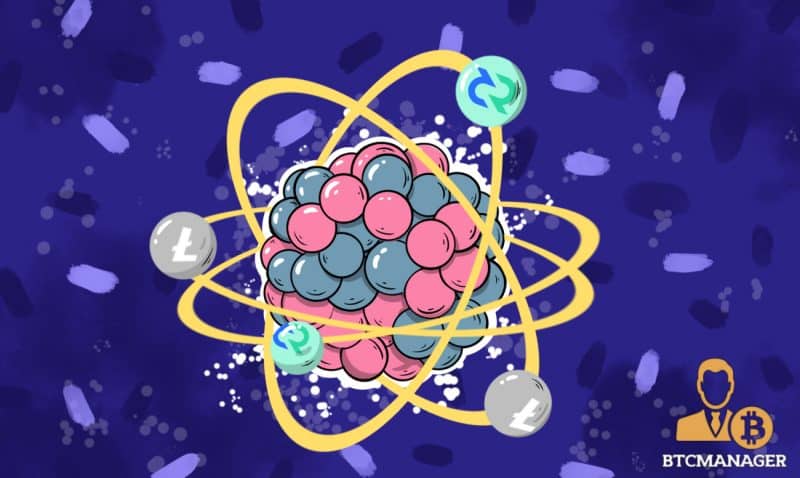Decentralized exchange and atomic swap explained for dummies and its implication

Executive summary
Atomic swap is the process of transaction of two different cryptocurrency without the need of any intermediary or exchange. It will help to create altcoin transaction exchange independent ,country independent and authority independent.It will safeguard the crypto holders from many unnecessary intervention.
Recent developments :
On October 7, 2017, the decentralized cryptocurrency trading platform Altcoin Exchange announced the team performed the first atomic swap between the Ethereum and Bitcoin blockchains. The exchange says this is the startup’s first step towards creating a trustless exchange process.
What Are Atomic Swaps?
Atomic swaps, or atomic cross-chain trading, is the exchange of one cryptocurrency to another cryptocurrency, without the need to trust a third-party. A relatively new piece of technology, atomic cross-chain trading is looking to revolutionize the way in which users transact with each other. For example, if Alice owned 5 Bitcoins but instead wanted 100 Litecoins, she would have to go through an exchange, i.e. a third-party. However, with atomic swaps, if Bob owned 100 Litecoins but instead wanted 5 Bitcoins, then Bob and Alice could make a trade. In order to prevent, for example, Alice accepting Bob’s 100 Litecoins but then failing to send over her 5 Bitcoins, atomic swaps utilizes what is known as hash time-locked contracts (HTLCs).
Hash time-locked contracts ensure that the atomic swap process is completely trustless by ensuring both fulfill the requirements of the trade. HTLCs require the recipient of a payment to acknowledge receiving payment prior to a deadline by generating a cryptographic proof of payment. Or the recipient risks losing the right to the claim the payment, therefore returning the funds back to the sender.
Therefore, for a trade between Alice and Bob to take place, both must submit their transaction to their respective blockchain, Alice on the Bitcoin blockchain and Bob on the Litecoin blockchain. In order for Alice to claim the 100 Litecoins sent from Bob, she must produce a number that only she knows, used to generate a cryptographic hash, therefore providing proof of payment. Similarly, in order for Bob to claim the 5 Bitcoins that was sent from Alice, he must also provide the same number, that was used to generate the cryptographic hash.
Requirements of Atomic Swaps
As exciting as this technology is, there are some fundamental requirements for a cryptocurrency before it can successfully support atomic swaps. One such requirement is the implementation of the Lightning network.
If a hash time-locked contract can be thought of as linking two blockchains together, the lightning network can be thought of as linking payment channels together. That is, for Alice and Bob to transact with each other, they must be linked through payment channels. The lightning network allows for that.
What’s this useful for?
Any large OTC trade can utilize this on-chain atomic swap. If Alice and Bob wanted to trade large amounts of BTC and LTC, on-chain swapping would make sense since it would not depend at all on trusting a third party.
Other possible uses are trustless exchanges. Users will be able to keep custody of their funds and atomically swap for other coins instead of keeping coins on the exchange. This takes out a whole host of vulnerabilities and attack surfaces associated with digital asset custody.
That said, on-chain atomic swaps reduce privacy as the payments on the two chains can be linked.
Conclusion
Atomic swaps are a really interesting innovation that can potentially change the cryptocurrency landscape. Instead of tumblebit or joinmarket, you may be able to use a secondary coin with privacy features to disassociate yourself from your coins. This in turn would make Bitcoin a lot more fungible, even if Bitcoin itself doesn’t have the feature!
We might see in the future coins utilized in this way where Bitcoin remains the store of value and unit of account, but other coins utilized as a medium of exchange.
In addition, for a transaction to occur between two different blockchains, it is necessary for both blockchains to share the same cryptographic hash function, such as SHA-256. This is to allow for the hash-time locked contract to function properly when it comes to the user providing the number that was generated via the hash function.
Great post mate
Atomic swaps between Litecoin and Bitcoin was a great new and it will have more to come.
As decentralised exchange, it will take time for them to take over the main exchange but they will. And I'm 100% with BTS
img credz: pixabay.com
Nice, you got a 5.9% @minnowbooster upgoat, thanks to @pro-analyst
Want a boost? Minnowbooster's got your back!
The @OriginalWorks bot has determined this post by @pro-analyst to be original material and upvoted it!
To call @OriginalWorks, simply reply to any post with @originalworks or !originalworks in your message!
To enter this post into the daily RESTEEM contest, upvote this comment! The user with the most upvotes on their @OriginalWorks comment will win!
For more information, Click Here!
Special thanks to @reggaemuffin for being a supporter! Vote him as a witness to help make Steemit a better place!
This post has received a 2.21 % upvote from @booster thanks to: @pro-analyst.